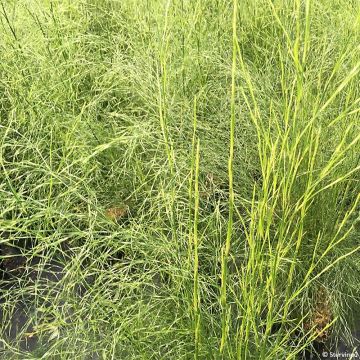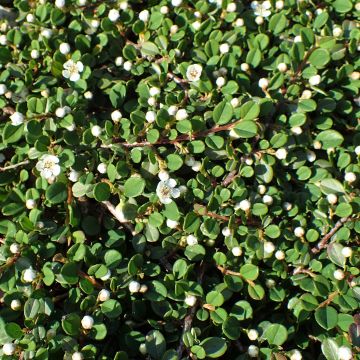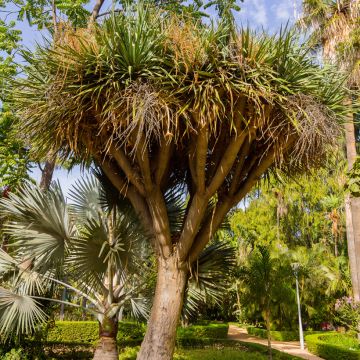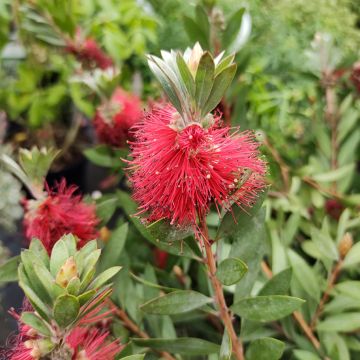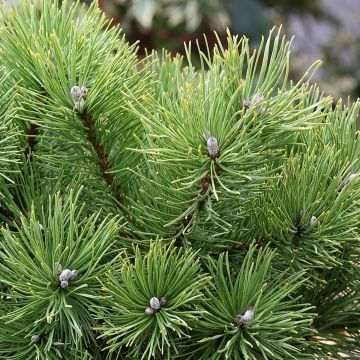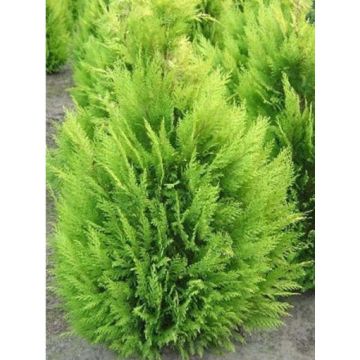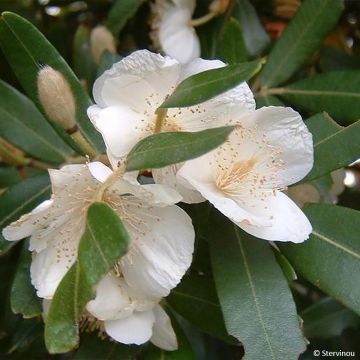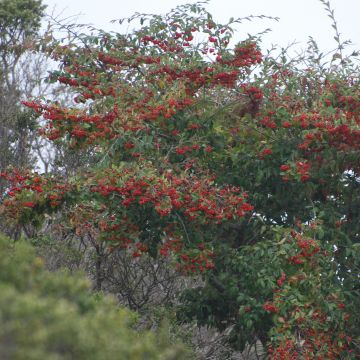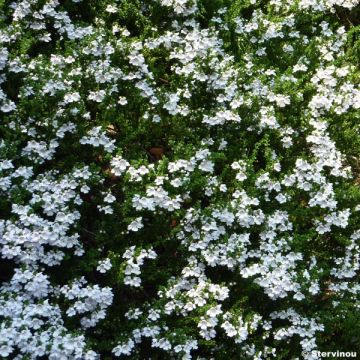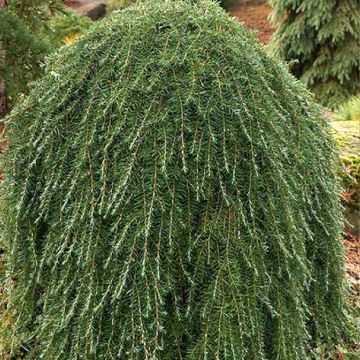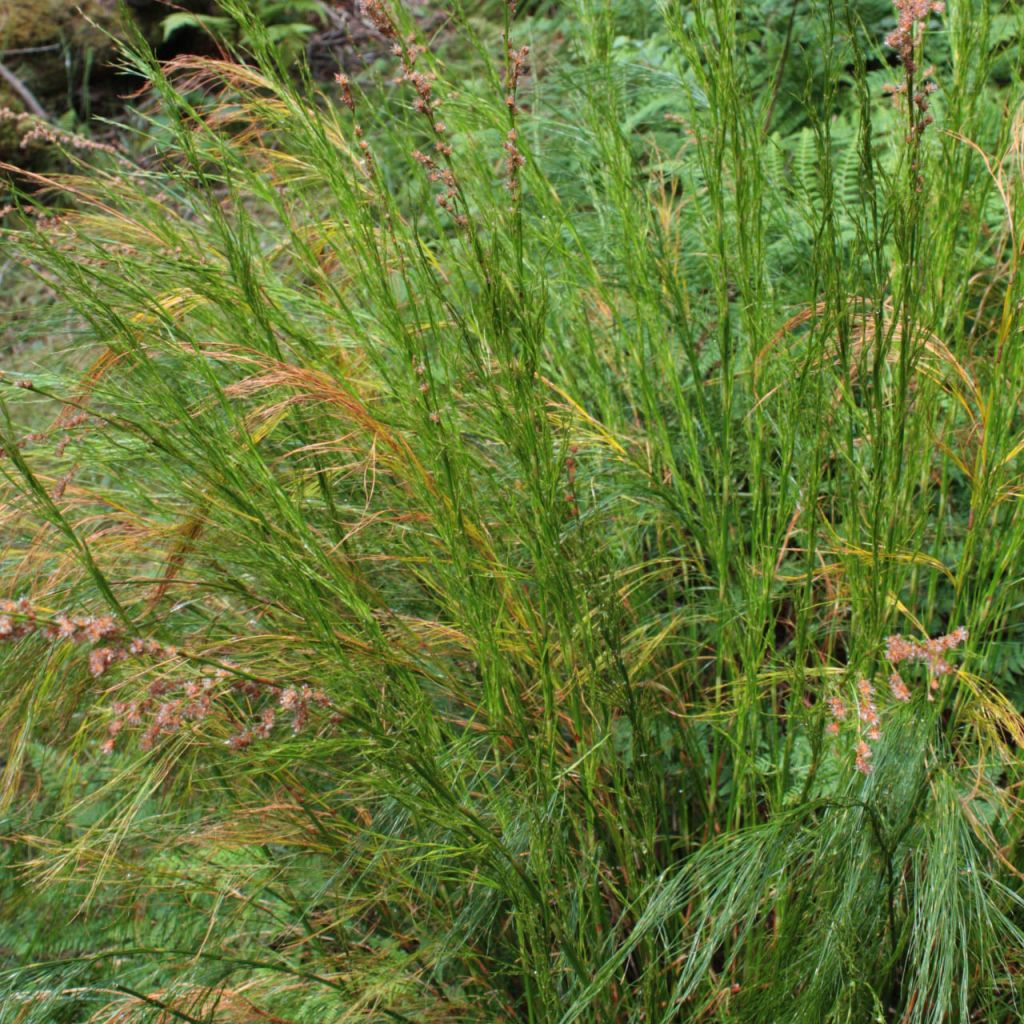

Restio tetraphyllus - Baloskion tetraphyllum
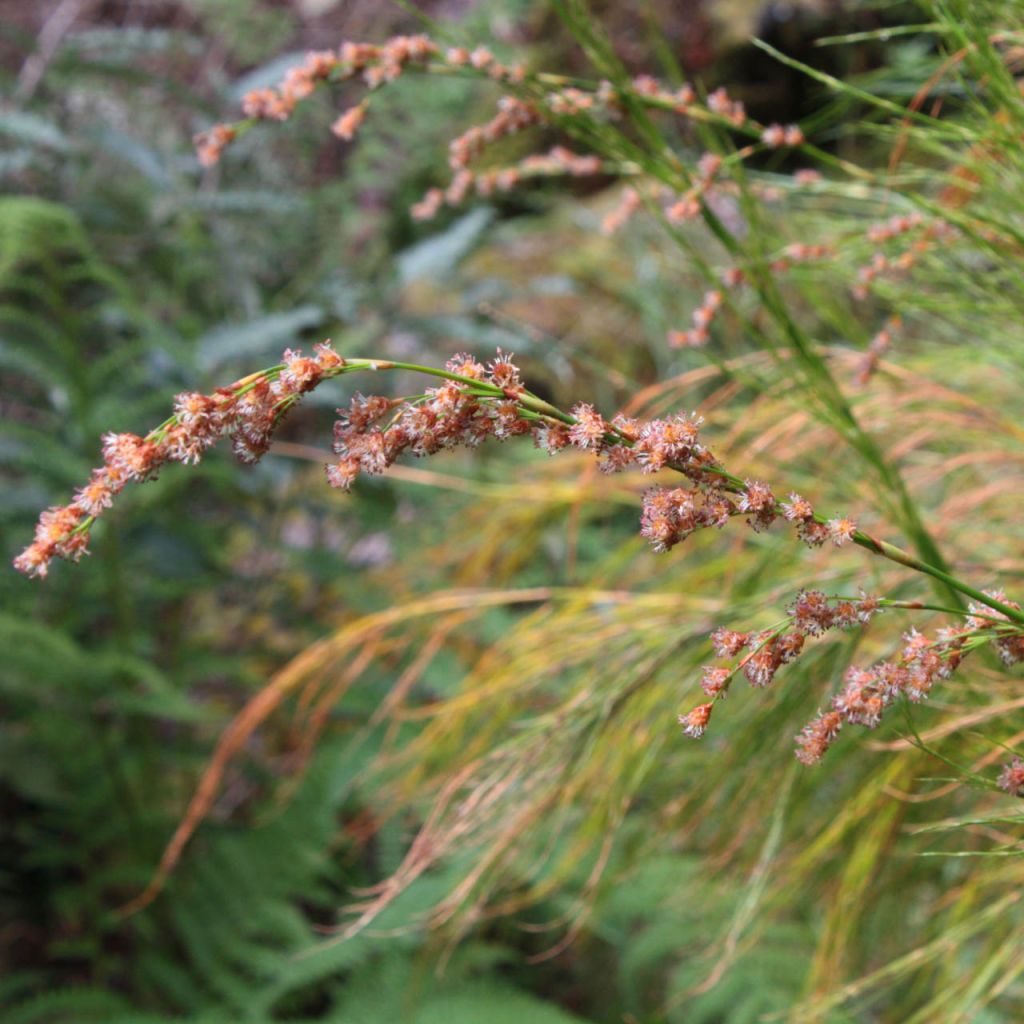

Restio tetraphyllus - Baloskion tetraphyllum
Restio tetraphyllus
Restio tetraphyllus
Tassel Cord Rush
This item cannot be shipped to the selected country
Delivery charge from €5.90
More information
Schedule delivery date,
and select date in basket
This plant carries a 24 months recovery warranty
More information
We guarantee the quality of our plants for a full growing cycle, and will replace at our expense any plant that fails to recover under normal climatic and planting conditions.
From €5.90 for pickup delivery and €6.90 for home delivery
Express home delivery from €8.90.
Does this plant fit my garden?
Set up your Plantfit profile →
Description
Restio tetraphyllus, or Tassel Cord Rush, better known as Baloskion tetraphyllum, is a large, somewhat frost-tender perennial native to wet areas and marshy zones in southeastern Australia. Little known and still underutilised in our gardens, this plant combines undisputed ornamental value with a unique personality: like a grass, it grows in a large undulating and flexible clump, but its infinitely feathery foliage in a very light green colour is very attractive, especially when the plant thrives in a large pot. To succeed in its cultivation, it is simply necessary to remember that it grows with its head in the sun and its feet in the water. It can be planted on the patio, near a pond, or even in brackish water, in mild climates.
Baloskion tetraphyllum is a botanic species confined to wet heathlands, riverbanks, and marshes along the Australian coasts of the states of Victoria, New South Wales, and Queensland. It is a rhizomatous perennial plant with a rather slow growth habit. This species was officially described in 1806 by the French naturalist Jacques Labillardière.
This large aquatic herbaceous perennial forms a clump of stems emerging from the stump, narrow at the base and widening upwards. It will reach a height of 1.50m (5ft) with a crown diameter of 1.20m (4ft) in open ground under our climates. In pots, it will reach a height of 1m (3ft) and spread 50cm (20in) at the base, with the crown reaching 80cm (32in) in diameter. When conditions are optimal, this plant will spread laterally to form large clumps over 1m (3ft) in diameter. It develops thin cylindrical and branching stems. Along its stems, at regular intervals, at the nodes, there are clusters of feathery branches, gathered in dense whorls. The stems lack true leaves. The young branches are pinkish in colour, then take on a beautiful acidic green hue, visible from afar in the garden on this large-sized plant. This plant is dioecious, meaning there are male and female plants. The flowering occurs from June to July, depending on the climate, in the form of long reddish-brown spikes, followed by the formation of capsules.
The Australian Restio is not very hardy, especially in its early years, but its bamboo-like silhouette in a bunch of large acidic green feathers cannot be ignored when spotted near water. However, a well-established plant will be able to withstand -8°C (17.6°F) occasionally, allowing it to be grown in open ground in mild climates. It can be used on the banks of water features, where it appreciates moist soil, or to dress the surroundings of a swimming pool, planted in a large container kept constantly moist. It can also be used in a very decorative way on the patio, to be protected in cold climates. In open ground or in a pot, it is always successful when paired with the astonishing Boronia, ferns, Dierama, Cape lilies, or even a Gomphostigma virgatum. Its flowers are beautiful in dried bouquets.
Report an error about the product description
Restio tetraphyllus in pictures
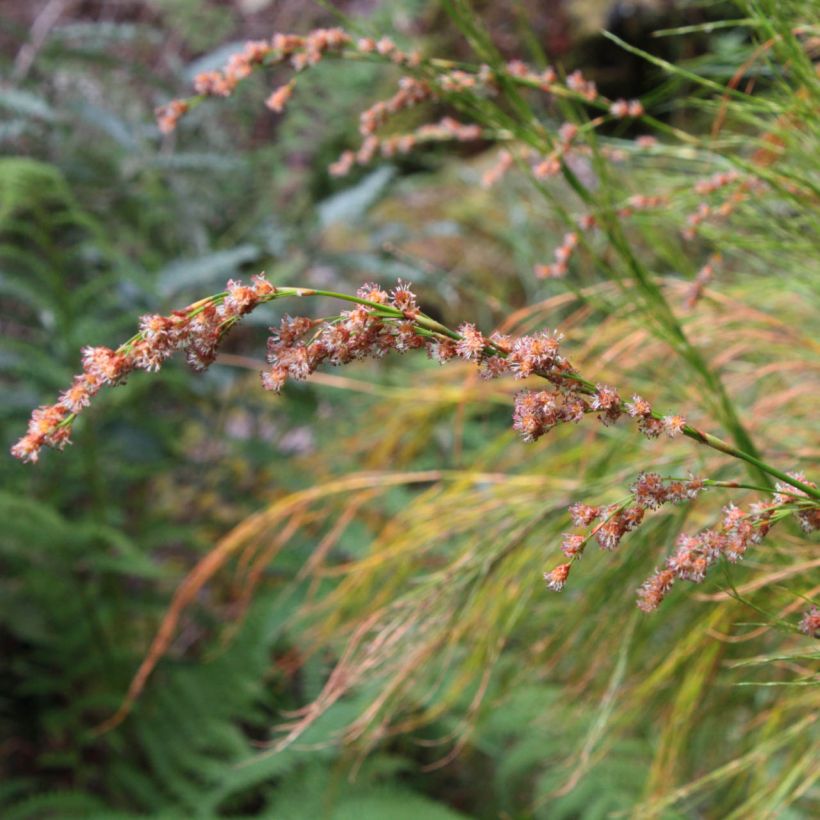

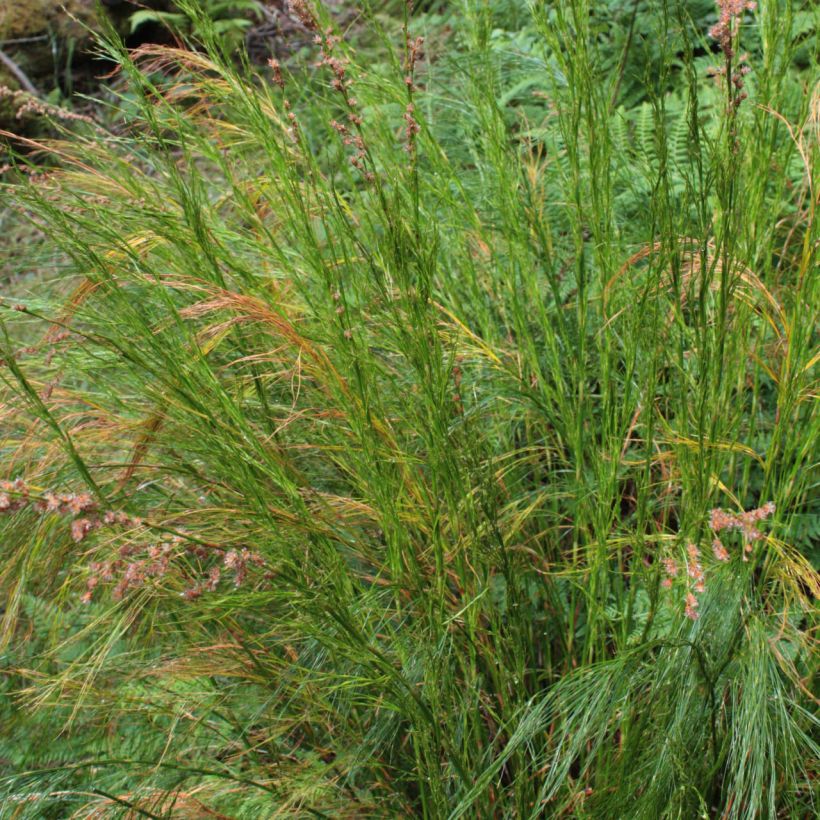

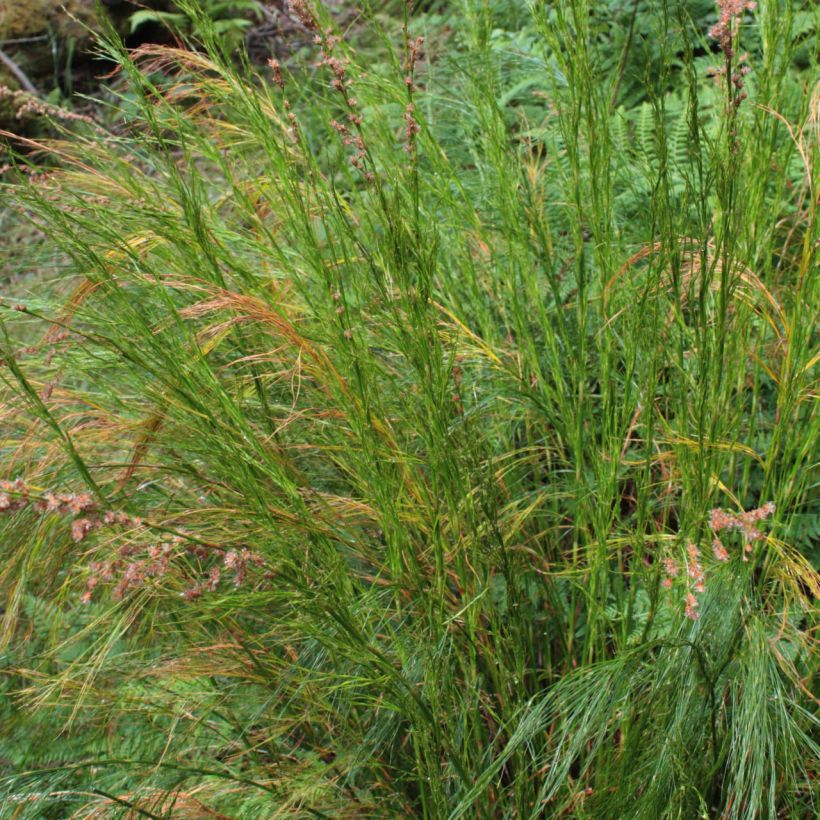

Plant habit
Flowering
Foliage
Botanical data
Restio
tetraphyllus
Restionaceae
Tassel Cord Rush
Australia
Other Restios
Planting and care
Baloskion tetraphyllum should be planted in spring, after the last frosts, in any soil that remains moist to wet, even submerged under 10cm (4in) of water. It is not picky about the nature of the soil, which can be clay, loam, sandy, or even slightly calcareous, but never dry. Choose a very sunny exposure or, at worst, light shade. It requires no particular maintenance. In pots, make sure the plant is constantly in waterlogged soil, provide fertilizer for green plants from spring to autumn, diluted in the watering water, every 15 days.
Propagation is done by dividing the clumps in spring.
Planting period
Intended location
Care
This item has not been reviewed yet - be the first to leave a review about it.
Evergreen shrubs
Haven't found what you were looking for?
Hardiness is the lowest winter temperature a plant can endure without suffering serious damage or even dying. However, hardiness is affected by location (a sheltered area, such as a patio), protection (winter cover) and soil type (hardiness is improved by well-drained soil).

Photo Sharing Terms & Conditions
In order to encourage gardeners to interact and share their experiences, Promesse de fleurs offers various media enabling content to be uploaded onto its Site - in particular via the ‘Photo sharing’ module.
The User agrees to refrain from:
- Posting any content that is illegal, prejudicial, insulting, racist, inciteful to hatred, revisionist, contrary to public decency, that infringes on privacy or on the privacy rights of third parties, in particular the publicity rights of persons and goods, intellectual property rights, or the right to privacy.
- Submitting content on behalf of a third party;
- Impersonate the identity of a third party and/or publish any personal information about a third party;
In general, the User undertakes to refrain from any unethical behaviour.
All Content (in particular text, comments, files, images, photos, videos, creative works, etc.), which may be subject to property or intellectual property rights, image or other private rights, shall remain the property of the User, subject to the limited rights granted by the terms of the licence granted by Promesse de fleurs as stated below. Users are at liberty to publish or not to publish such Content on the Site, notably via the ‘Photo Sharing’ facility, and accept that this Content shall be made public and freely accessible, notably on the Internet.
Users further acknowledge, undertake to have ,and guarantee that they hold all necessary rights and permissions to publish such material on the Site, in particular with regard to the legislation in force pertaining to any privacy, property, intellectual property, image, or contractual rights, or rights of any other nature. By publishing such Content on the Site, Users acknowledge accepting full liability as publishers of the Content within the meaning of the law, and grant Promesse de fleurs, free of charge, an inclusive, worldwide licence for the said Content for the entire duration of its publication, including all reproduction, representation, up/downloading, displaying, performing, transmission, and storage rights.
Users also grant permission for their name to be linked to the Content and accept that this link may not always be made available.
By engaging in posting material, Users consent to their Content becoming automatically accessible on the Internet, in particular on other sites and/or blogs and/or web pages of the Promesse de fleurs site, including in particular social pages and the Promesse de fleurs catalogue.
Users may secure the removal of entrusted content free of charge by issuing a simple request via our contact form.
The flowering period indicated on our website applies to countries and regions located in USDA zone 8 (France, the United Kingdom, Ireland, the Netherlands, etc.)
It will vary according to where you live:
- In zones 9 to 10 (Italy, Spain, Greece, etc.), flowering will occur about 2 to 4 weeks earlier.
- In zones 6 to 7 (Germany, Poland, Slovenia, and lower mountainous regions), flowering will be delayed by 2 to 3 weeks.
- In zone 5 (Central Europe, Scandinavia), blooming will be delayed by 3 to 5 weeks.
In temperate climates, pruning of spring-flowering shrubs (forsythia, spireas, etc.) should be done just after flowering.
Pruning of summer-flowering shrubs (Indian Lilac, Perovskia, etc.) can be done in winter or spring.
In cold regions as well as with frost-sensitive plants, avoid pruning too early when severe frosts may still occur.
The planting period indicated on our website applies to countries and regions located in USDA zone 8 (France, United Kingdom, Ireland, Netherlands).
It will vary according to where you live:
- In Mediterranean zones (Marseille, Madrid, Milan, etc.), autumn and winter are the best planting periods.
- In continental zones (Strasbourg, Munich, Vienna, etc.), delay planting by 2 to 3 weeks in spring and bring it forward by 2 to 4 weeks in autumn.
- In mountainous regions (the Alps, Pyrenees, Carpathians, etc.), it is best to plant in late spring (May-June) or late summer (August-September).
The harvesting period indicated on our website applies to countries and regions in USDA zone 8 (France, England, Ireland, the Netherlands).
In colder areas (Scandinavia, Poland, Austria...) fruit and vegetable harvests are likely to be delayed by 3-4 weeks.
In warmer areas (Italy, Spain, Greece, etc.), harvesting will probably take place earlier, depending on weather conditions.
The sowing periods indicated on our website apply to countries and regions within USDA Zone 8 (France, UK, Ireland, Netherlands).
In colder areas (Scandinavia, Poland, Austria...), delay any outdoor sowing by 3-4 weeks, or sow under glass.
In warmer climes (Italy, Spain, Greece, etc.), bring outdoor sowing forward by a few weeks.

































